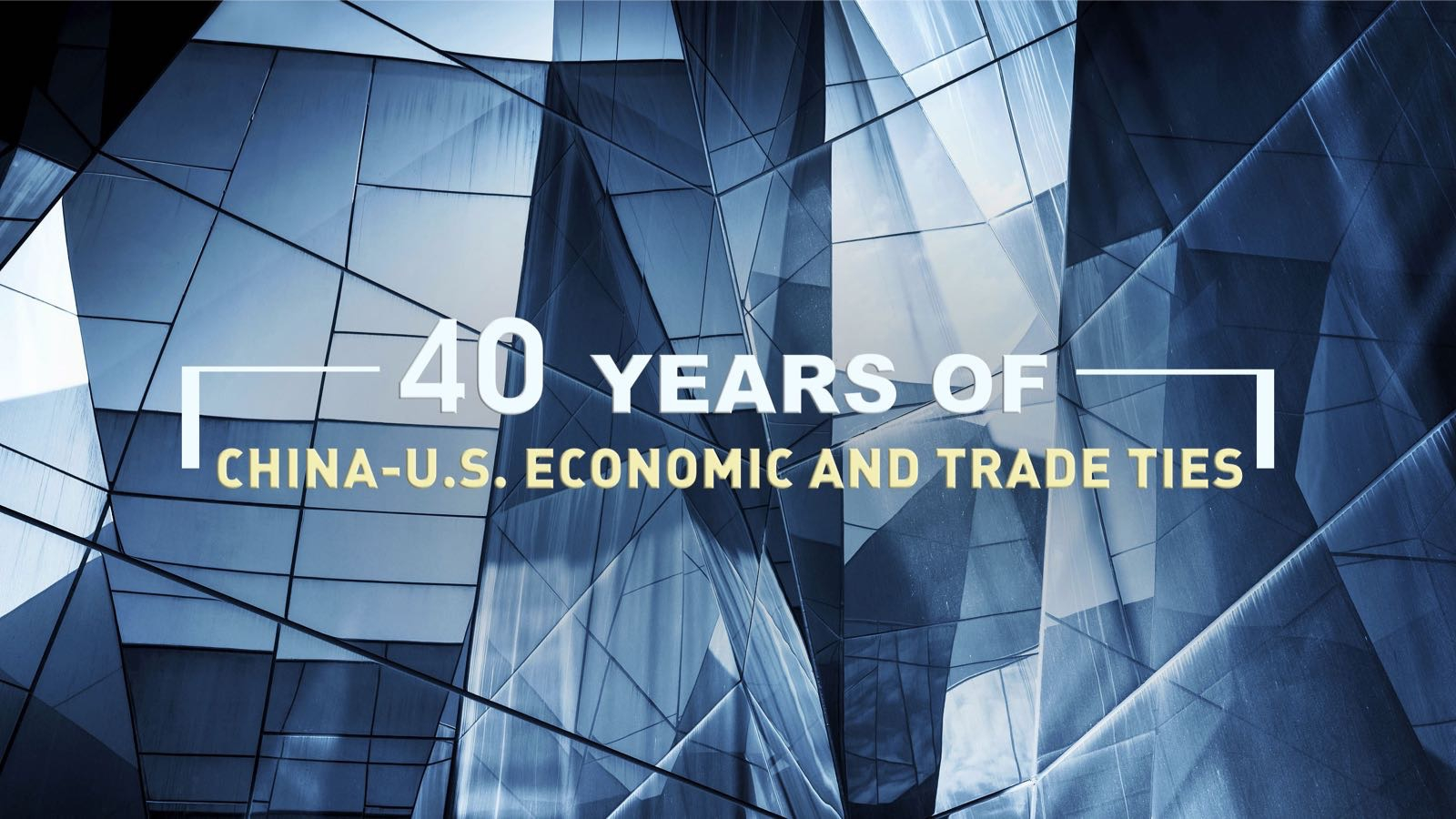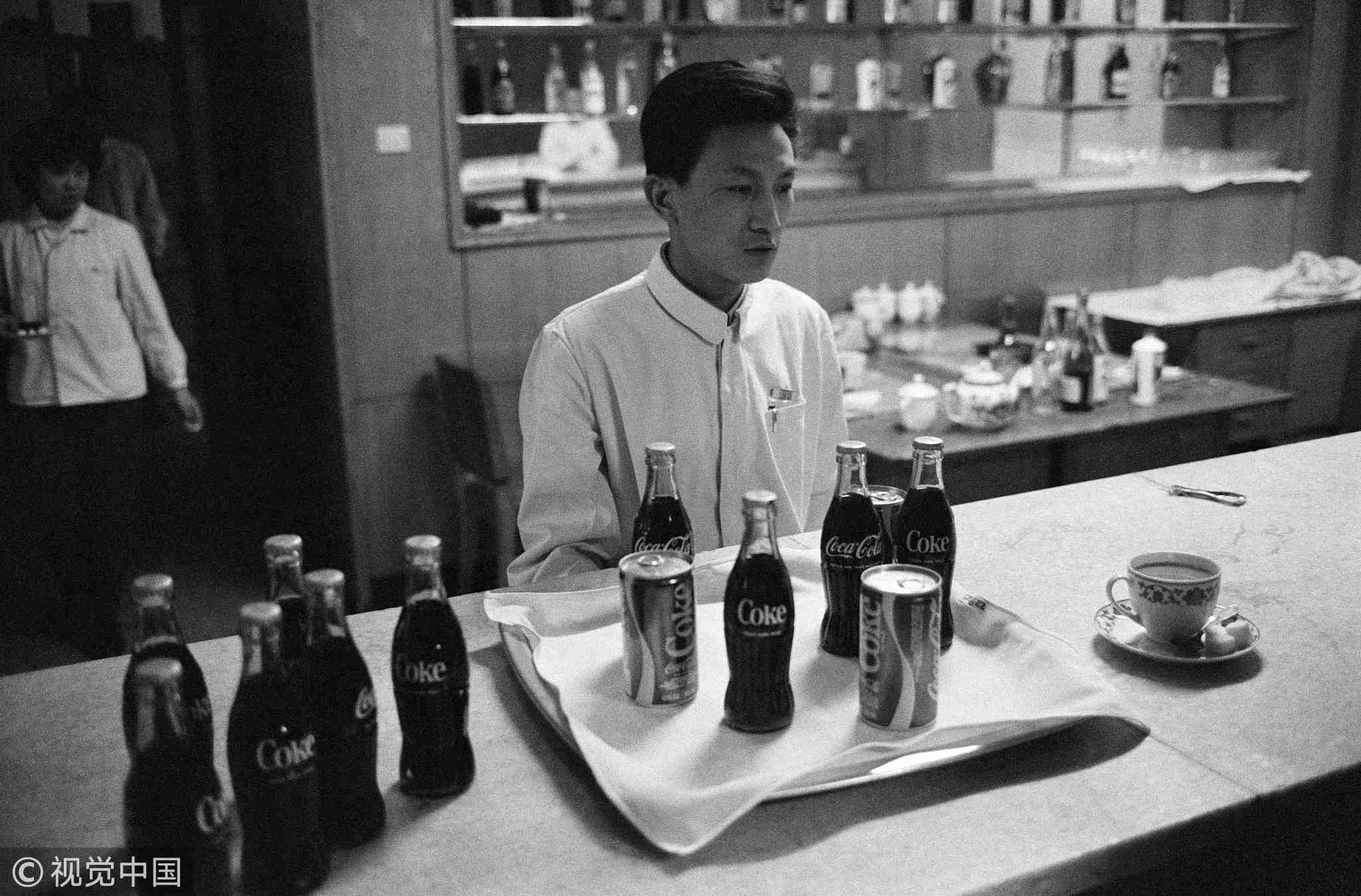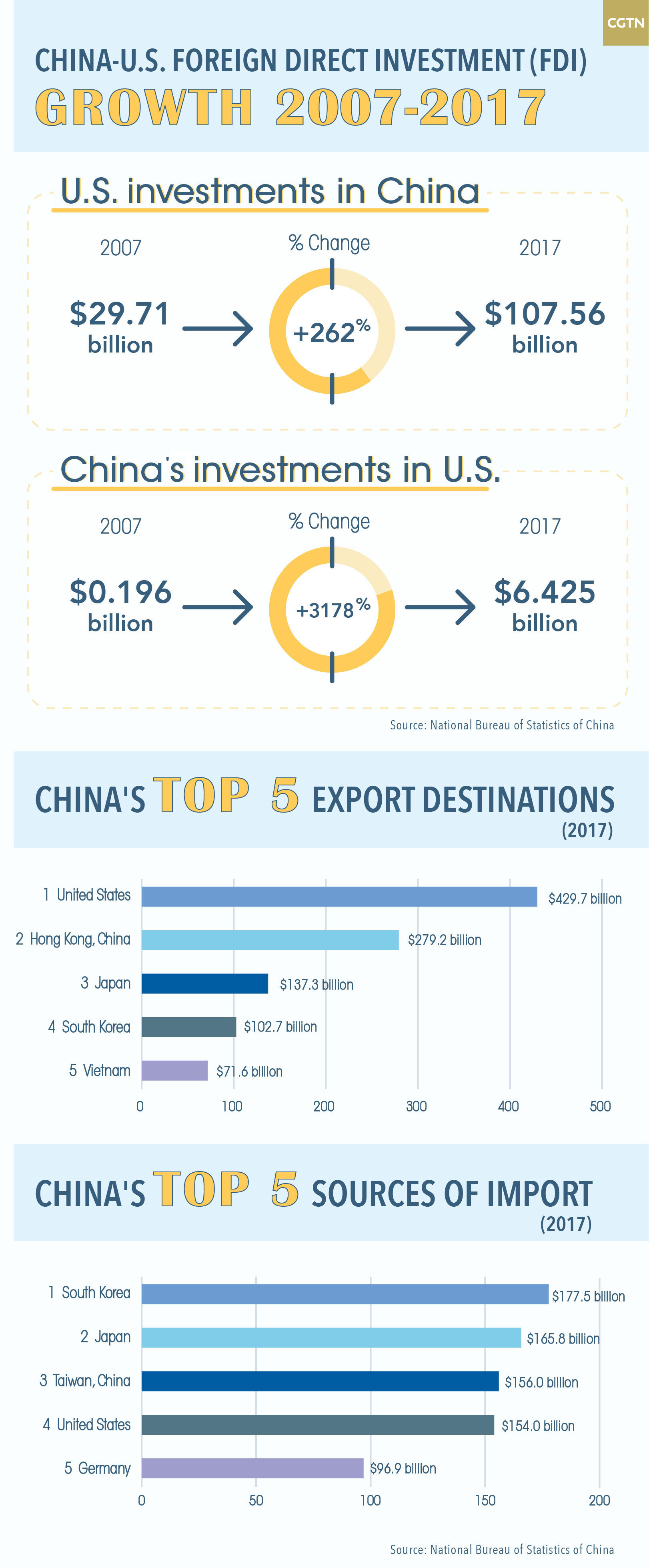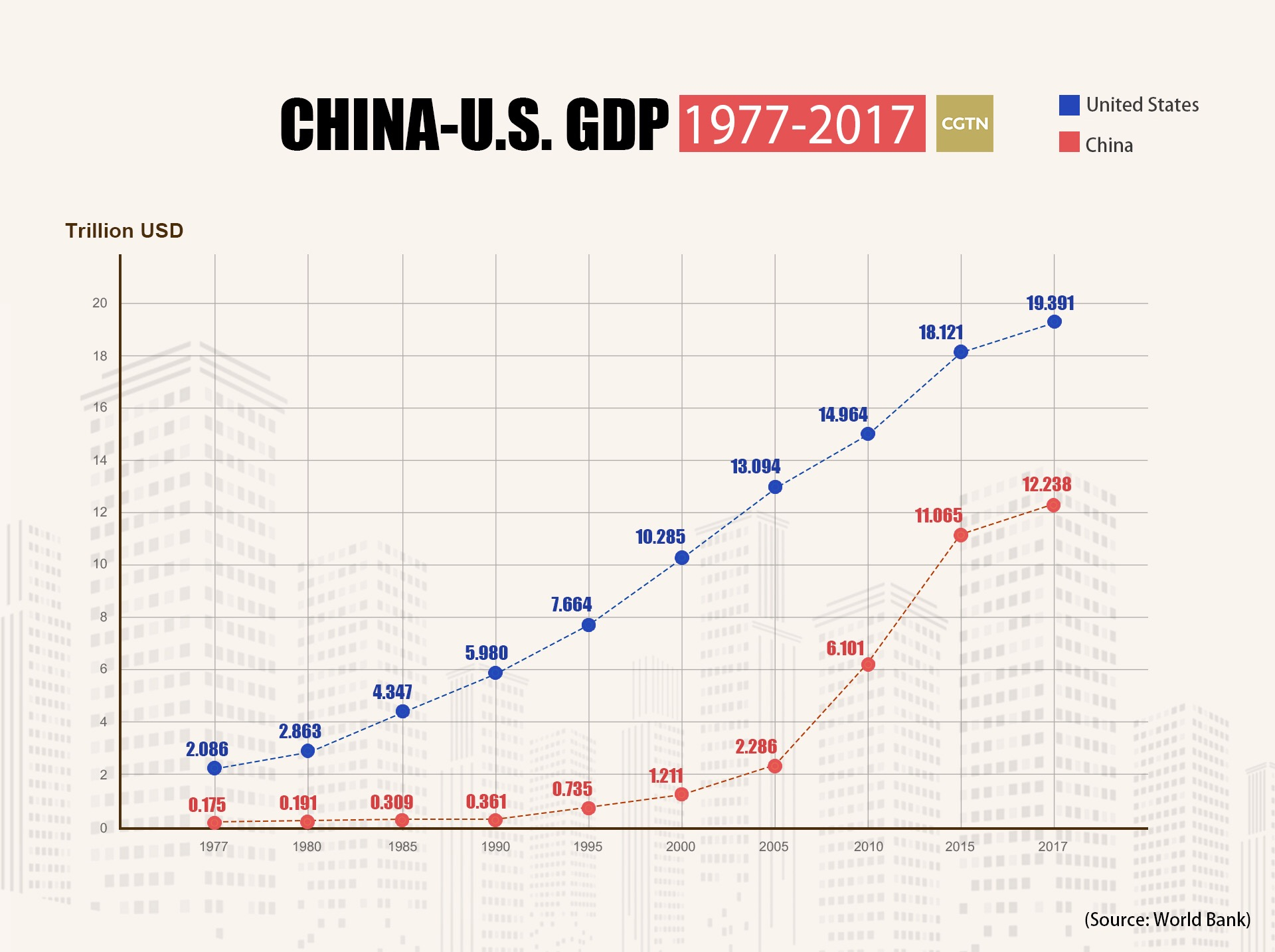
Economy
13:03, 01-Jan-2019
A story of success: 40 years of economic ties between China, U.S.
Updated
12:22, 04-Jan-2019
CGTN

Although persistent trade tensions between China and the U.S. have portrayed the world' two largest economies more as adversaries than friends, the past 40 years of their relations have been a story of commercial success.
China and the U.S. have been each other's largest trading partner with close people-to-people contact in all walks of life, but the relations had a cold start.
From zero to boom
Back in 1972 when U.S. President Richard Nixon made a historic visit to China, the annual bilateral trade was less than 100 million U.S. dollars and two-way investment was close to zero.
After more than two decades of a trade embargo, the first American business delegation led by the U.S.-China Business Council (USCBC) visited China in 1973. Robert Hormats, a U.S. economist who was involved in founding USCBC, described that period as "when there was virtually no trade,” according to the China Business Review.
A turning point came not long after. China started its reform and opening-up in 1978 and the next year the two countries established diplomatic relations to begin a surge in bilateral trade and investment.
Coca-Cola, the signature drink from the U.S., opened a factory in China in 1979 and the company said in September that China is now its largest market for fruit juice drinks and the third largest for all its beverages.

Coca-Cola on display at a hotel in Beijing in 1979. /VCG Photo
Coca-Cola on display at a hotel in Beijing in 1979. /VCG Photo
In 1992, Motorola, which brought the mobile phone to China, launched the first wholly foreign-owned company in the country.
Another pioneer is General Motors Co., which launched a joint venture with Shanghai Automotive Industry Corp. Group (SAIC) in 1997. When the two sides founded the first factory in a Shanghai rural suburb surrounded by farmland, no one would have predicted the dramatic growth of China's private car ownership and that the country would become the world's largest auto market in 2010, in less than one decade.
Integration in global trade
The second turning point came on 2011. After joining the World Trade Organization, China's trade with the rest of the world, especially the US., skyrocketed.

The U.S. has been China's largest export destination with total exports worth 429.7 billion U.S. dollars and also China's fourth largest source of imports, according to data from China's National Bureau of Statistics.
Meanwhile, investment from the U.S. to China tripled in the ten years to 2017 and China's investment in the U.S. surged from 0.196 billion U.S. dollars in 2007 to 6.425 billion dollars last year.
The world's two largest economies together account for about half of the global GDP, according to data from the World Bank.

Against that background, their trade conflict has created uncertainty for the world economy.
At the same time, efforts are underway elsewhere to try to stabilize other trading arrangements, including the Comprehensive and Progressive Agreement for Trans-Pacific Pacific (CPTPP) which took effect on Sunday and the China-led Regional Comprehensive Economic Partnership (RCEP) which is in the final negotiation stage.
The U.S. and China may hold a round of negotiations in Beijing in January, following a phone call between their presidents over the weekend, a sign of progress in cooling the tensions.

SITEMAP
Copyright © 2018 CGTN. Beijing ICP prepared NO.16065310-3
Copyright © 2018 CGTN. Beijing ICP prepared NO.16065310-3